If you were asked to name a category of software that has a ton of products in it, task management would certainly be near the top of the list.
There are hundreds if not thousands of task management applications currently on the market. Trello, Asana, Todoist, Monday, and Apple’s Reminders app are just a few of the products in this category. Capterra lists 353 task management products in their marketplace and G2Crowd lists 240.
In addition to all of this existing competition, building a todo app is one of the most popular ways new software developers learn to program, so the amount of competition you would expect to see in this category would only grow over time.
The Challenge
Building a product that people love to use and are actually willing to pay for in a category with many many competitors.
The Solution
Interviewing paying users of competing products to identify the unmet needs of existing users and unsolved problems that present opportunities to create product-led growth by delivering compelling solutions through new product features that motivate new user adoption and willingness to pay.
The Timeline
Two weeks from start to finish, not including scheduling user interviews, which began one week in advance.
The Work
- User Interviews
- User Testing
- Competitive Analysis
- Product Spec Writing
- UX Design
User Interviews
We interviewed 20 current or former paying users of task management applications.
We qualified user interview subjects by their willingness to pay for task management applications in the past, their authority to make purchasing decisions, and whether they had a history of using task management apps for their business.
We asked users about why they used task management apps and what led them to make their purchasing decisions. When any of their answers were unclear or could be misinterpreted we asked the users we were interviewing for more context and clarification.
When users expressed positive and negative feelings towards their product experiences but didn’t give us evidence of the follow-up actions they took in response to their emotions, we asked follow-up questions to validate whether their feelings were strong enough to motivate a purchasing decision.
We captured and saved recordings of user interviews which we then later transcribed and created user interview transcripts. After performing these user interviews, we reviewed each user interview recording and transcript and wrote down key takeaways.
User Testing
We tested five of the most popular products in the task management category and created full product teardowns for major user flows of each application.
We annotated screenshots of key product experiences for each of the 5 task management products. As we used the products, we created notes each time the product failed to work as expected or produced undesirable emotions. These notes were then appended to the screen for each product’s experience.
UX Research & Competitive Analysis
We reviewed the results of our user interviews and user testing and identified mismatches between users’ existing pain points and the features and solutions existing task management products offered.
Users complained that looking at long lists of incomplete tasks was overwhelming and made them feel anxious. Generally users complained that using task management software was stressful and something they didn’t look forward to.
Users wanted to feel like they were getting work done and were creating momentum towards achieving their goals, but they didn’t feel like the existing task management products gave them that feeling.
Users still recognized the need to organize their work and accomplish the tasks that they were assigning themselves and being assigned by other people, but didn’t enjoy the existing process because looking at long lists of unaccomplished tasks was stressful.
Product Strategy
With a solid list of key pain points and the necessary context to understand when and where users were experiencing them, we created a list of potential solutions to these pain points that we could test and craft into key product features that differentiate Terrific Tasks from existing task management product competitors.
These features focus first and foremost on alleviating stress during the task management process.
Product Spec Writing
As the last step in our UX research and product strategy process, we wrote a full and complete product spec where we defined the specific user problems we were looking to solve, examples of when users experienced them for example use cases, and created user flows for product features.
UX Design
Product Design, UI/UX
We designed user flows for key user goals, figured out how to orgainze these actions onto screens, and then designed UI elements to fill in the contextual gaps where the UX would benefit from creating interactable design components.
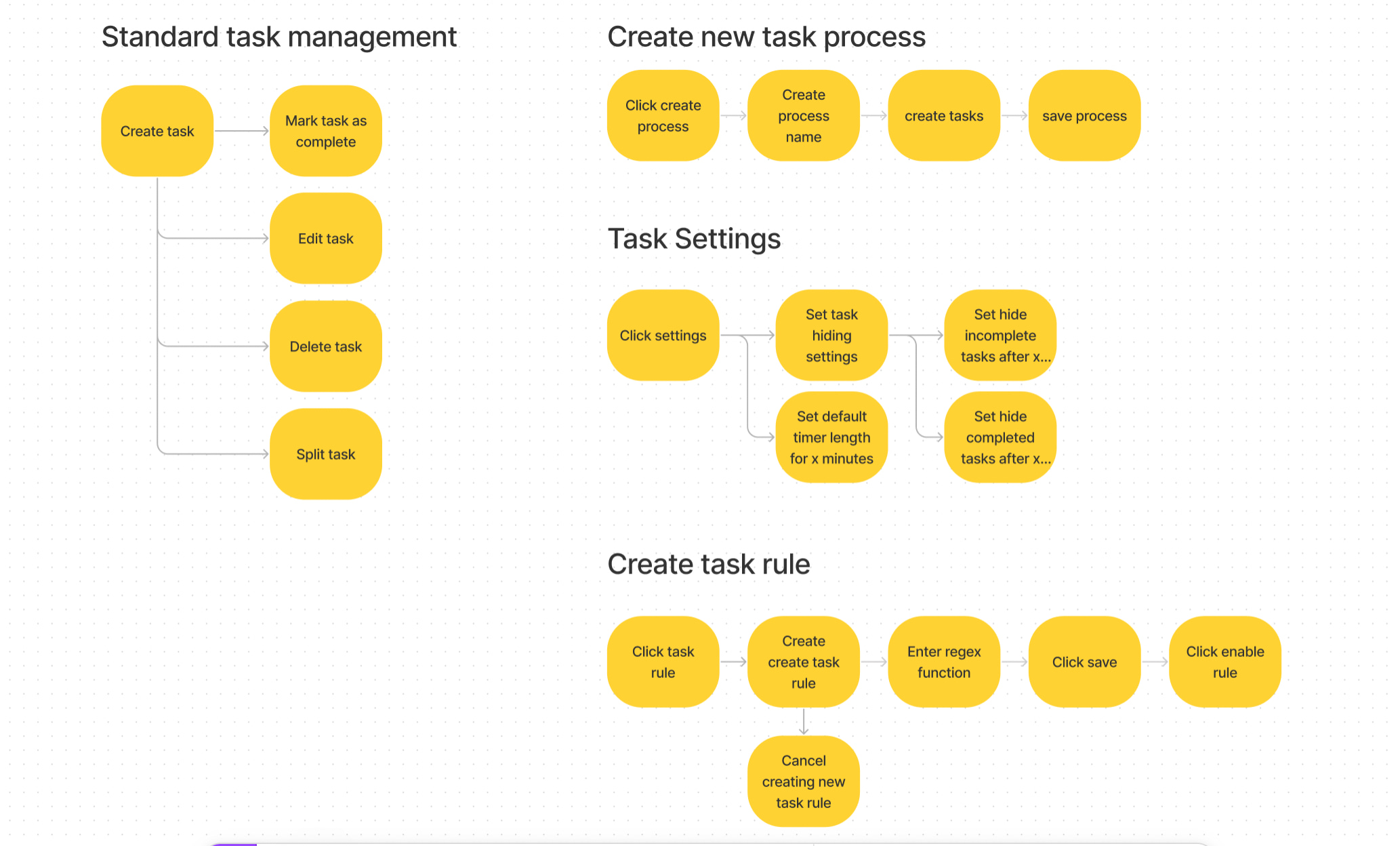
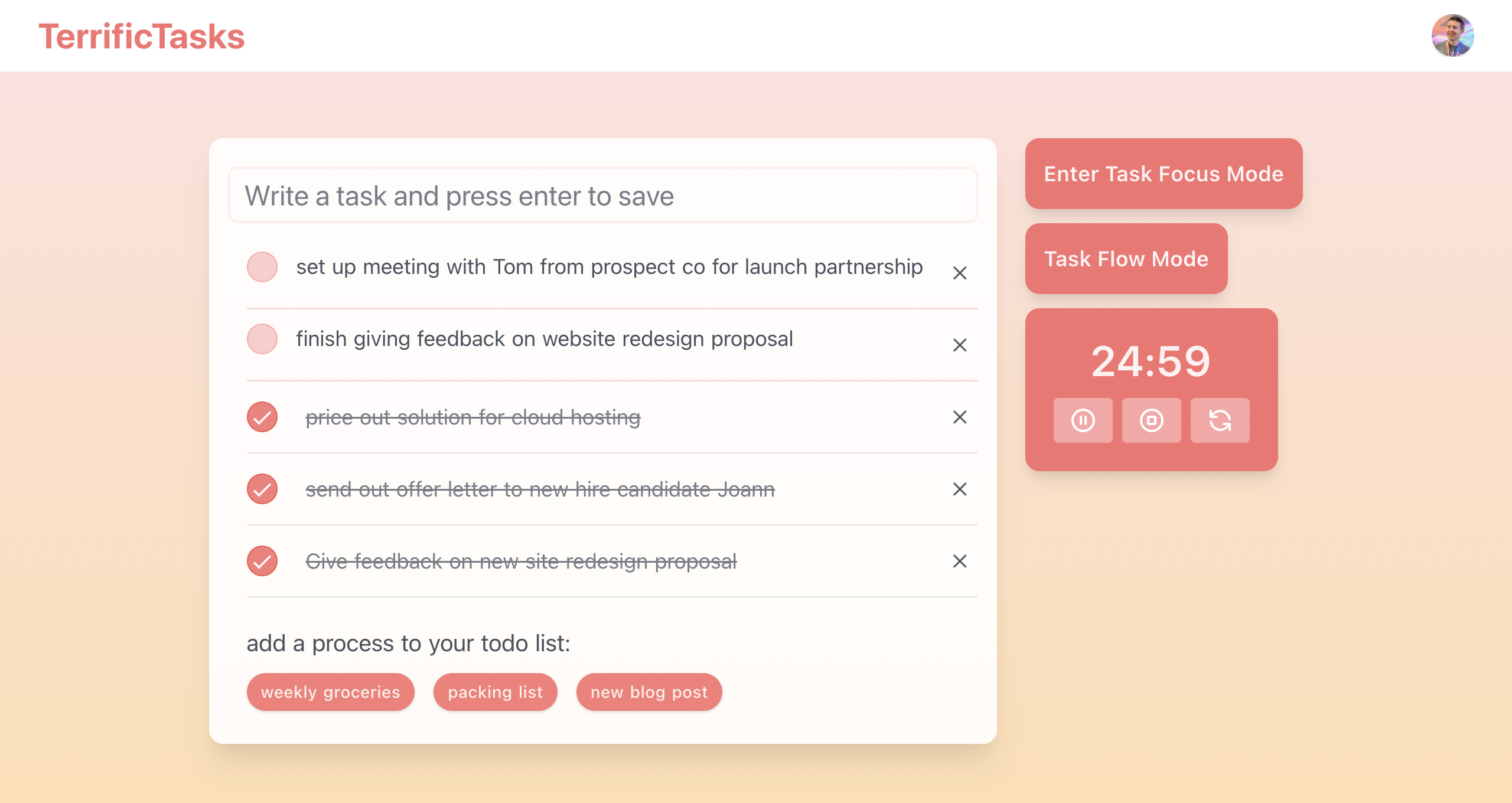
Modern Modular Website Design
We designed a modern responsive website with a complete design system, distinct brand colors, and modular design components for easy website setup and customization.
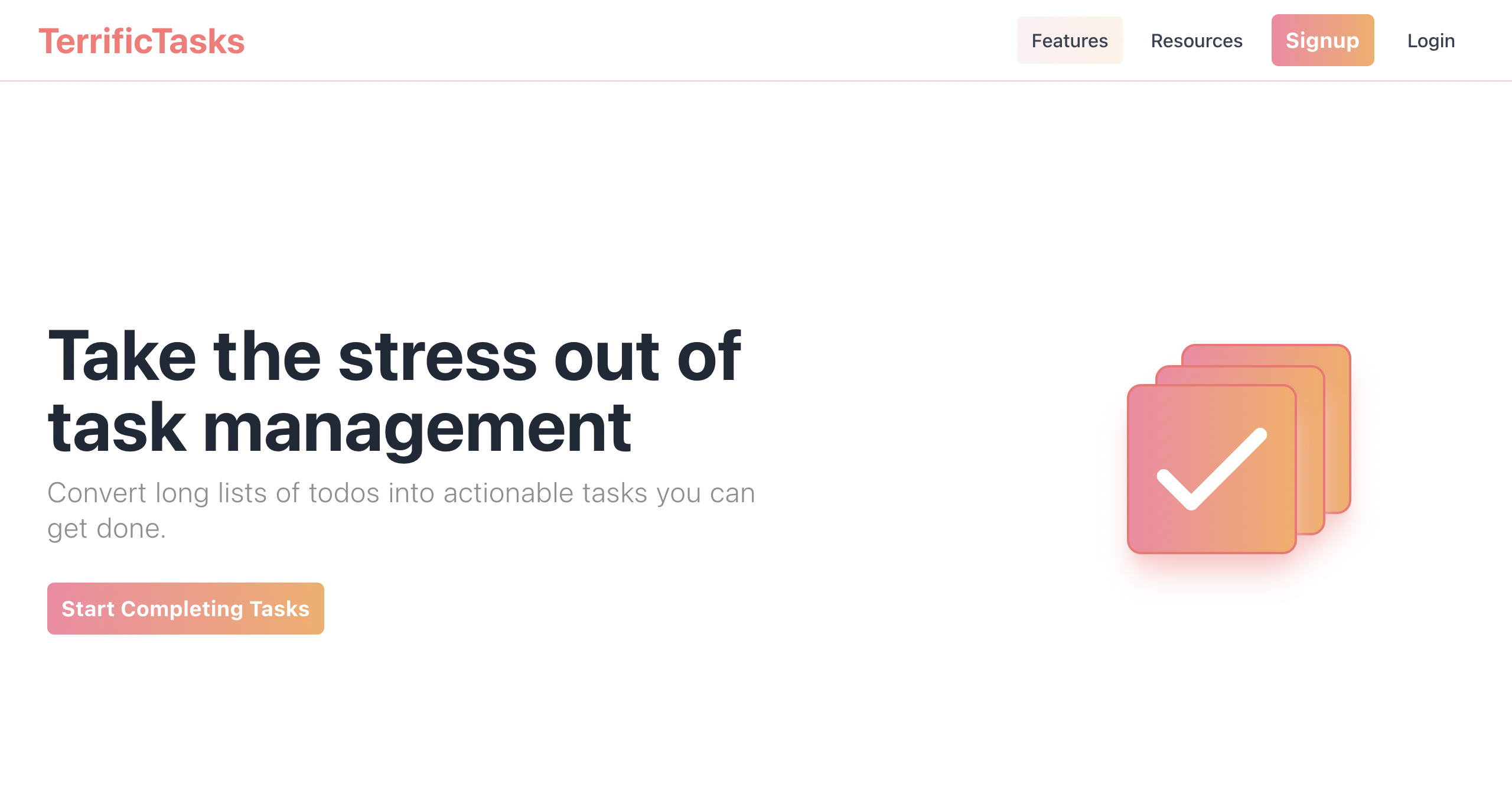
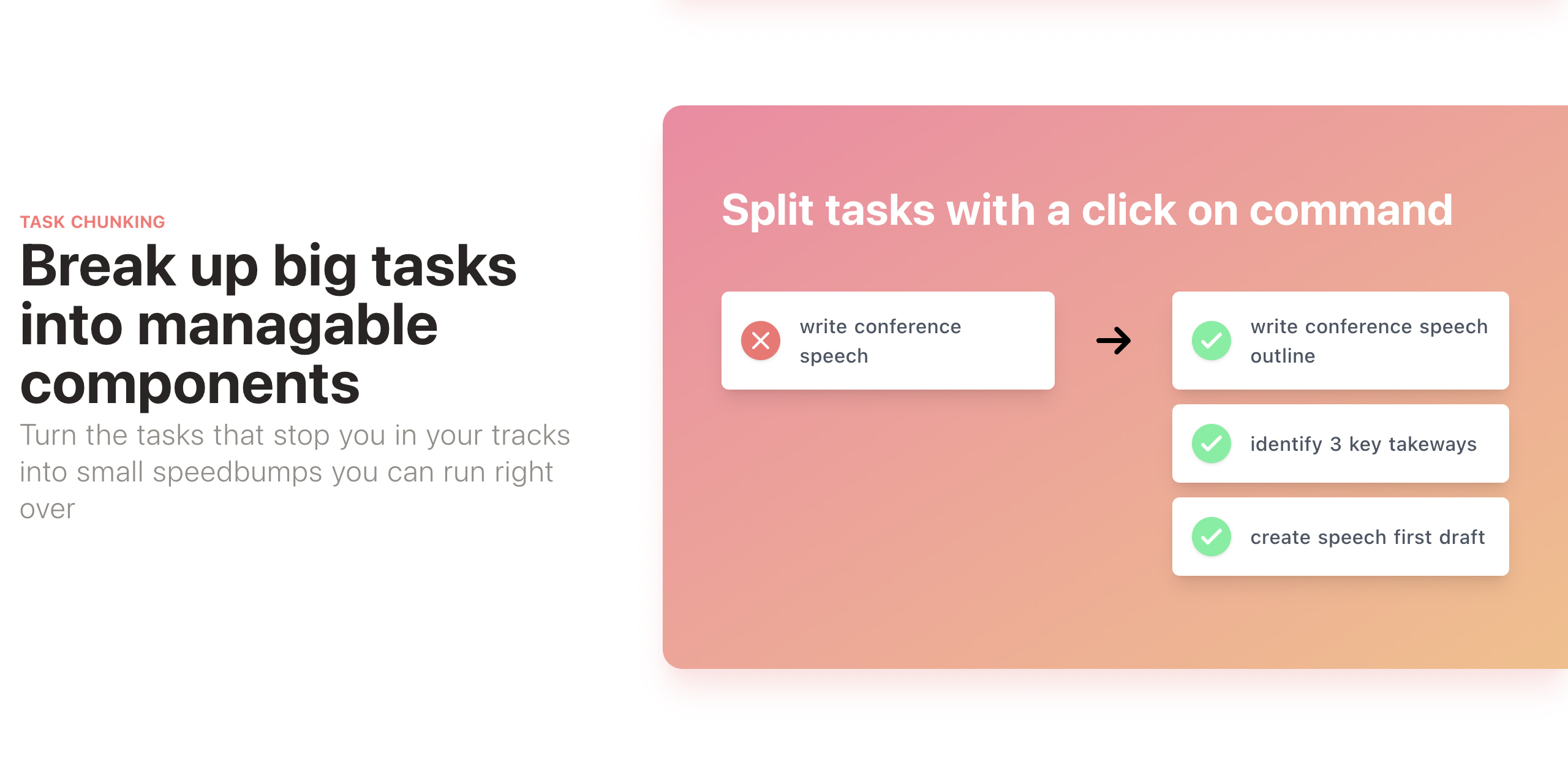
Social Sharing Links
We designed beautiful social sharing images that are fully compliant with opengraph and meta image tag standards so that users can easily share links to the product across social media platforms with full size image link previews.
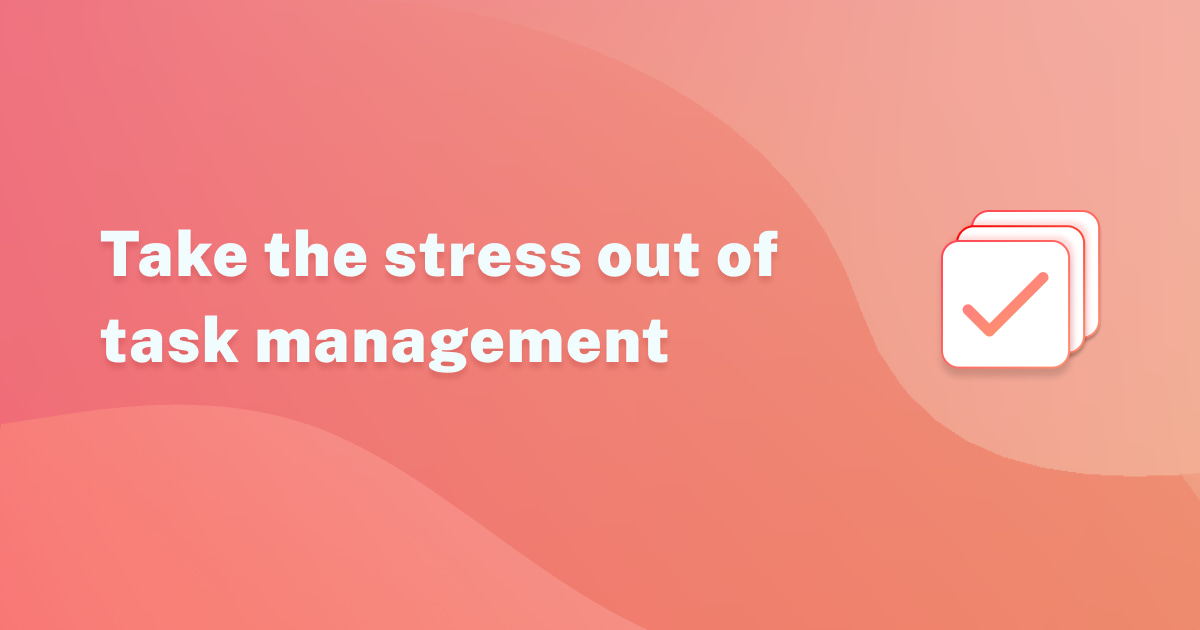

 Perfecting Product
Perfecting Product